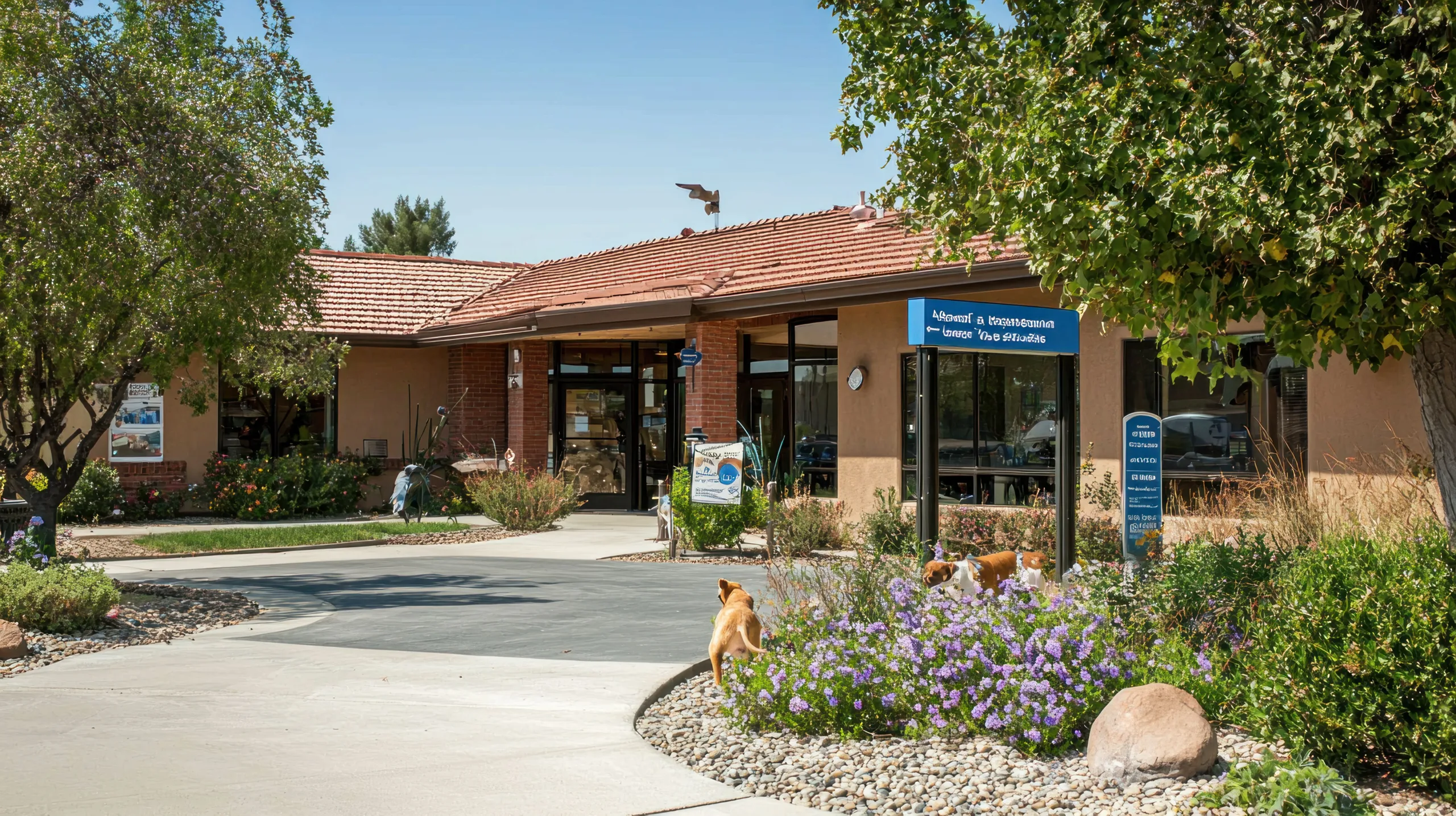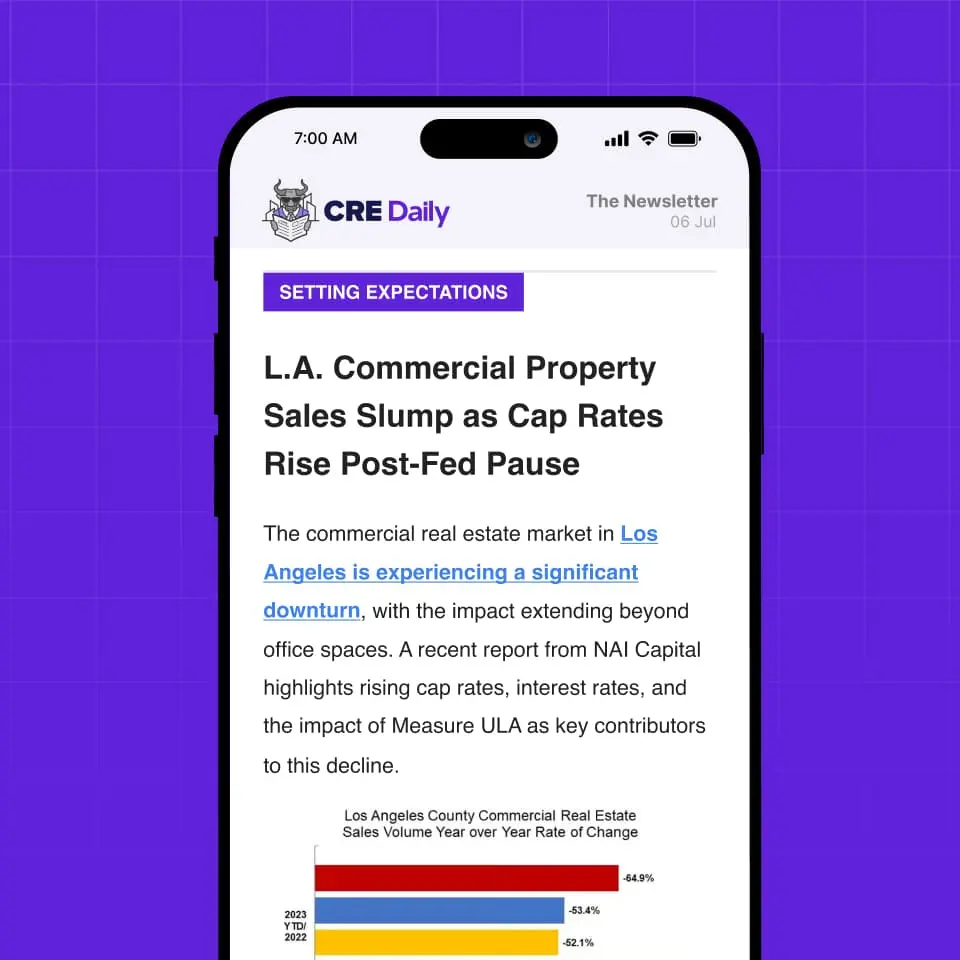- Veterinary practices have increased 18% since 2009, with over 1K new clinics opened in just one year between 2021 and 2022.
- Retail and industrial vacancies — including shuttered banks, pharmacies, and breweries — are increasingly being redeveloped as modern veterinary spaces.
- Corporate ownership now dominates the vet space, creating opportunities for real estate specialists to adapt and lease high-tech facilities.
- Though revenue growth has slowed, annual vet visit numbers remain elevated compared to pre-pandemic levels, maintaining strong real estate demand.
Pets Replace People — And Drive Real Estate Demand
As traditional retail tenants exit suburban buildings and industrial parks, veterinary care providers are moving in. They’re no longer just converting homes into clinics, reports Bisnow. The newest wave of animal care centers resembles human hospitals, a reflection of evolving consumer expectations.
Terravet Real Estate Solutions CEO Dan Eisenstadt said his clients increasingly view their pets as family. “These look like mini-hospitals,” he noted, highlighting how younger and older Americans alike are investing more in pet care — a trend he calls the “humanization of the human-animal experience.”
Booming Clinics Meet Fading Retail
Between 2009 and 2022, the number of veterinary practices grew to roughly 34K nationwide, according to the American Veterinary Medical Association. That growth was supercharged by pandemic-era pet adoption — 1 in 5 households added a new pet between 2020 and 2021.
Meanwhile, bankruptcies and closures have freed up thousands of former retail and industrial spaces. Developers and operators are increasingly targeting these buildings to meet surging demand.
In one example, Terravet paid $4.8M to acquire a shuttered brewery in suburban Seattle, spending an additional $1M on upgrades before leasing it to BluePearl Pet Hospital, owned by Mars Inc.
Get Smarter about what matters in CRE
Stay ahead of trends in commercial real estate with CRE Daily – the free newsletter delivering everything you need to start your day in just 5-minutes
Corporate Consolidation Fuels Real Estate Activity
Private equity and global corporations now dominate the animal healthcare sector. Brakke Consulting reports that corporate players controlled 50% of the vet market by 2021. This includes Mars-owned brands and fast-growing platforms like Thrive Pet Healthcare and NVA.
These groups often rely on real estate specialists to find and adapt spaces. According to Wine Group CEO Brian Wine, many consolidators aren’t interested in owning property — they’re focused on scaling operations and need help finding turn-key solutions.
Detached retail boxes, like former banks or pharmacies, are particularly appealing due to their size, parking, and zoning advantages. “They can occupy similar freestanding buildings,” Eisenstadt said.
A Talent Play, Too
The rise of high-end clinics isn’t just about pets — it’s also about attracting top veterinary talent. State-of-the-art equipment and 24/7 emergency facilities are more appealing to new grads like Kyle Granger Jr., who’s joining a Thrive location in Illinois.
He prefers the stability and structure of corporate employment, where financial buy-in isn’t expected. “With corporate, you’re not going to have that,” he said, comparing it to the burdens of running a traditional mom-and-pop practice.
Demand Eases Slightly — But Fundamentals Stay Strong
Despite a slight dip in visits (down 2.7% YoY), overall veterinary revenues are still up 1.6%, per AVMA data. Eisenstadt remains optimistic, pointing to long-term demand trends and the sector’s resilience post-pandemic.
Advanced care facilities now make up half of Terravet’s portfolio, a sharp shift from industry norms 30 years ago. With few real estate firms targeting this niche, competition remains limited.
“Back when I started, everyone thought I was crazy,” said Wine. “Now those same people want in.”
What’s Next
As retail closures persist and demand for pet care remains elevated, expect further growth in veterinary-focused adaptive reuse. The sector may be niche, but its newfound mainstream appeal is reshaping suburban real estate — one former bank or brewery at a time.
















